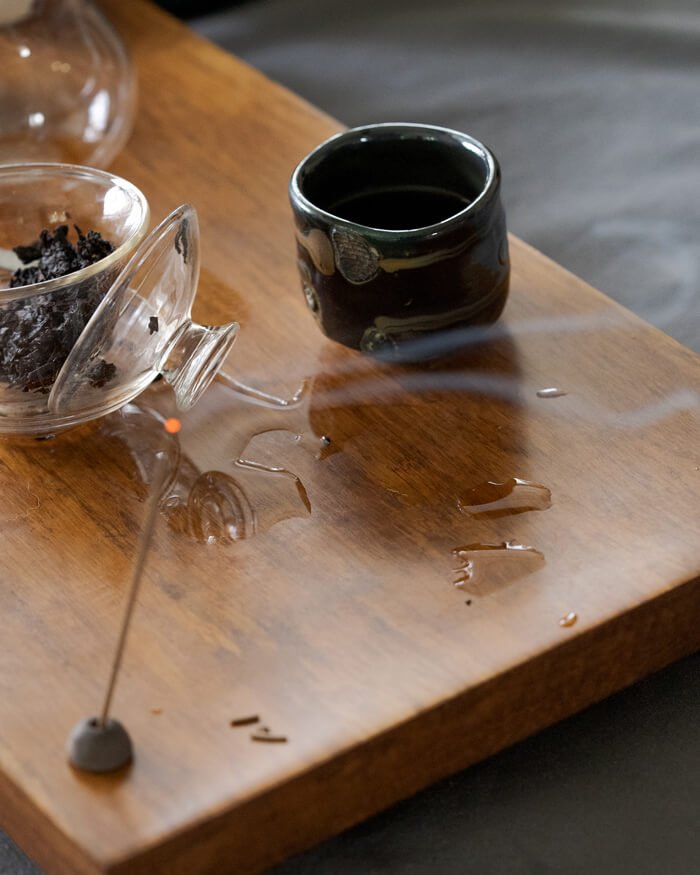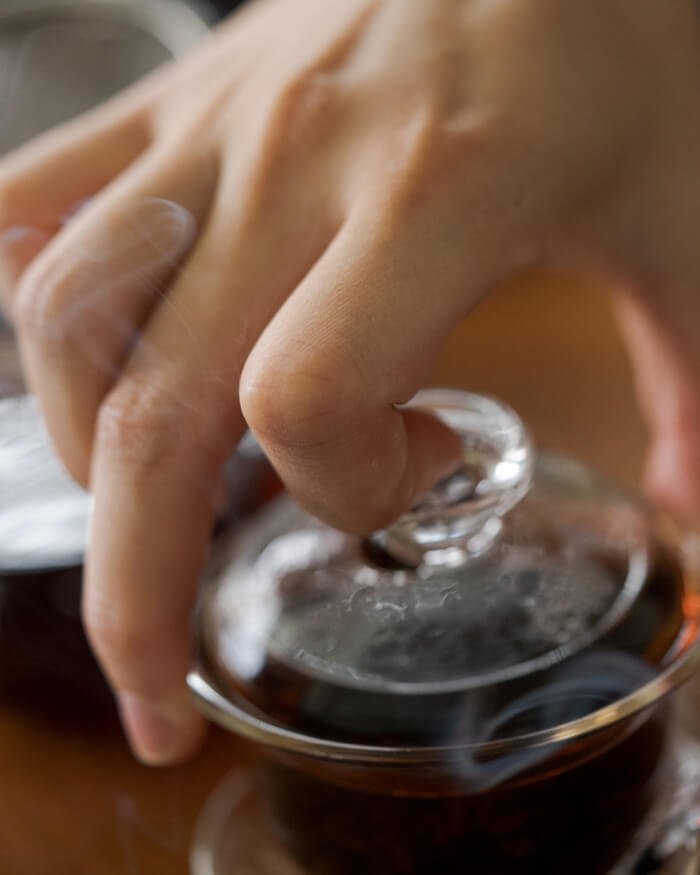Shou pu vs Sheng pu
If you're a fan of tea, then you've probably heard of Pu Er tea. Although it has been around for centuries, it only became widely known in recent years. In this article, I will compare the 2 main types of Pu Er tea: Shou Pu vs Sheng Pu.
Being able to distinguish both teas will greatly help you when it’s time to go ¨Pu er shopping¨. So I will go over the differences between the 2 profiles:
Their origins
How they are produced
And what flavors to expect
But first, let’s briefly remind ourselves of what exactly is Pu Er tea.
What is Pu Er Tea?
Pu Er tea is a fermented tea originating from Yunnan Province in China and gets its name from the town of Pu Er where it was first produced. It is exclusively grown and crafted in Yunnan and is usually made from large tea leaves of the Camellia Sinensis var. Assamica.
It has 2 distinct categories: Sheng Pu Er (Raw Pu Er), considered the most traditional of the 2, and Shou Pu Er (Ripe Pu Er), a more recent creation.
Extra note: Both Pu er are known to have many different names so it’s easy to get confused. For example, Sheng Pu is often called Raw Pu Er or unripened Pu Er; while Shou Pu can be named Ripe Pu Er or Cooked Pu Er. You will get used to those names as you learn.
Pu Er Tea Production Process
How Sheng Pu is Processed
Sheng Pu Er is a Green tea and is processed like one, with one key difference... During the step known as the Kill-Green, the leaves are typically roasted to prevent the enzymes in the leaves from causing further oxidation and preserve the fresh taste and green color of the tea.
But for Sheng Pu, this Kill-Green step is purposely left incomplete so that some enzymes remain active inside the plant, causing the leaves to undergo a slow and natural fermentation process. This gives Sheng Pu an aging potential that sets it apart from other Green teas. Once heated, the leaves are then sun-dried and pressed into tea cakes.
How Shou Pu is Processed
Shou Pu belongs to the Black tea category (meaning Dark tea, nothing to do with what we call ¨Black tea¨ in the West). To produce Shou Pu, the tea leaves are wetted and piled up for a couple of weeks, and let to compost. This encourages the development of desirable microbes which speed up the fermentation process.
When the tea has finally fermented, it is unpiled, ventilated, and pressed into tea cakes or bricks. So while Sheng Pu is enzymatically oxidized, Shou Pu is microbially fermented.
Origins of Sheng Pu and Shou Pu
Sheng Pu’s History
Sheng Pu has been around for centuries and is considered the ¨original¨ form of Pu Er. Historically, as early as the 8th century, Chinese merchants used to press tea into cake shapes for easy transportation/storage and trade it with Tibetans for horses.
Their trading journey would take several months in a warm and humid environment, and the cakes would naturally ferment over time.
Shou Pu’s History
Shou Pu’s history is more recent. It was first produced in the Kunming tea factory around 1973. At the time, aged Sheng Pu was becoming more and more popular.
In fact, the demand was so high that tea makers of Yunnan started looking for ways to speed up the aging process. So they decided to create an artificially aged Pu-Er via an accelerated microbial fermentation. And that’s how Shou Pu was born!
Flavor Profile
Sheng Pu’s Taste
The flavor profile of Sheng Pu changes and develops over time - the older the tea, the more mellow and sweet it will taste. Sheng Pu can be aged 5, 10, 20, or even 40 years, but you really don’t have to age it that much if you like it young.
The color of the leaves will also get darker with age and turn from green to brown. Sheng Pu can have many different flavors which will greatly depend on the:
Quality of the leaves
Age of the tea
Storage conditions
Young Sheng Pu (under 5 years old) tend to taste:
Astringent
Grassy
Fresh
With bright, floral notes
Aged Sheng Pu can be described as:
Earthy
Fruity
Bitter-sweet
Tannic
Shou Pu’s Taste
Compared to Sheng Pu, the taste profile of Shou Pu tea is usually more smooth and creamy, with no bitterness. It has deep, rich flavors that can be described as:
Earthy
Creamy
Woody
Sweet
When brewed, Shou Pu Er can be dark red, brown, or even pitch black just like ink! In fact, that is why it is called ¨Hei-cha¨, literally ¨Black tea¨ in Chinese (known as Dark Tea in the West). Shou Pu’s leaves are also much darker than Sheng Pu’s due to their intense microbial fermentation.
Another detail worth noting is that Sheng Pu has a longer aging potential than Shou Pu because it goes through a long, natural fermentation while Shou Pu’s aging was accelerated. That’s why Shou Pu is often cheaper than Sheng Pu - it takes less time to mature, hence less expensive to produce.
Shou Pu vs Sheng Pu - A Matter of Taste
In a word, Sheng Pu is a tea with a long tradition, produced via natural enzymatic oxidation; while Shou Pu is historically more recent and goes through an artificial, microbial fermentation. They have different stories, different production processes, and both offer unique flavors and aromas. Even in the same Pu Er category, you will find teas that taste very different.
So the battle “Shou Pu vs Sheng Pu” doesnt’ have any winner really… It’s difficult to say one is better than the other: it’s totally a matter of taste. You might have to try many samples of both styles to have an idea of which is your favorite.
In the meantime, if you wish to dive deeper into the Pu Er world, I invite you to read our extensive guide on What is Pu Er Tea here. This article will cover every question you could have about Pu Er tea.






